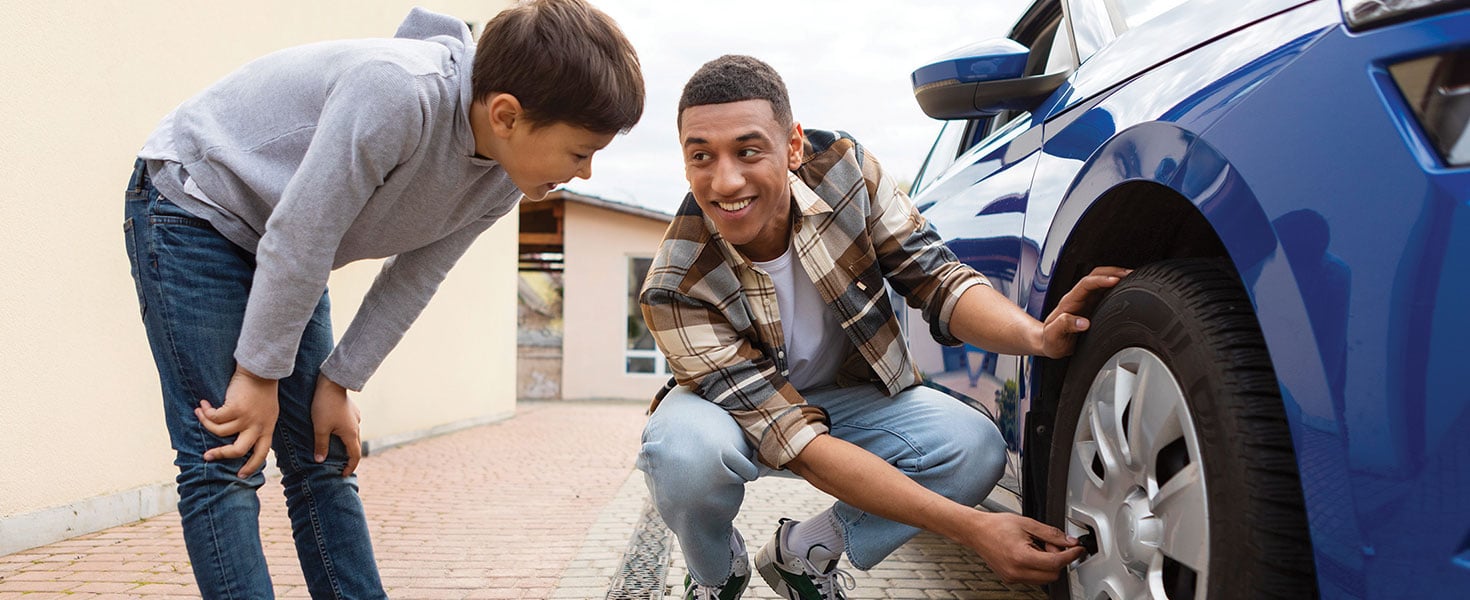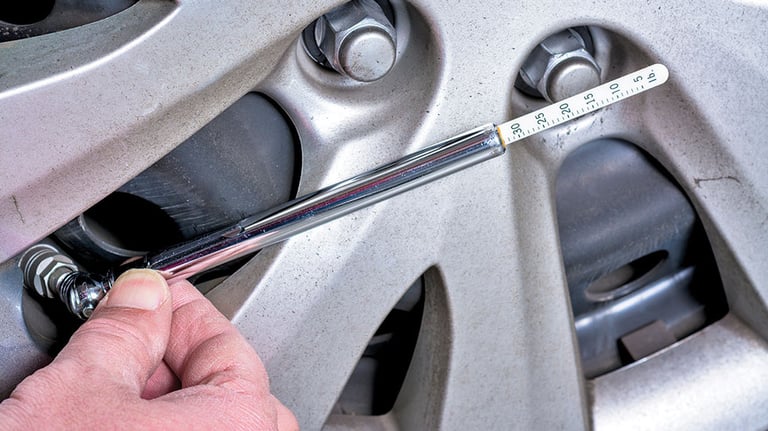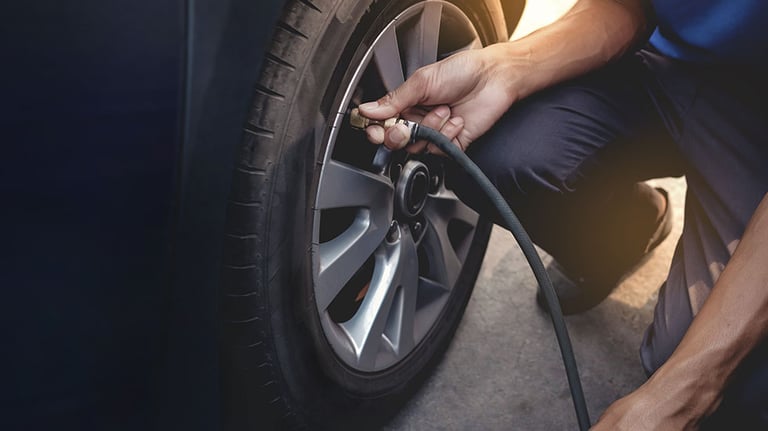How to Check and Correct Tire Pressure
A step-by-step guide to checking tire pressure and filling your vehicle’s tires with air


Your car’s tire pressure affects tread wear as well as fuel economy and vehicle handling and safety, so it’s important that tires be properly inflated. Here’s how to check their inflation levels, which should be done monthly or whenever the car’s tire-pressure warning light comes on.

Step 1. Determine the proper tire pressure by looking for the tire pressure sticker, which is usually affixed to the driver’s side door jamb or the inside of the fuel cap door.
Step 2. Take the reading after your car has sat for at least four hours, so that the tires have had the chance to cool. Even a short drive can generate enough heat to distort your readings. Taking tire pressures first thing in the morning is ideal.
Step 3. Use a tire pressure gauge that has sufficient range to meet your vehicle’s needs. To be on the safe side, choose a gauge that reads up to 100 PSI.
Step 4. Take your readings by removing the cap on the tire’s valve stem. Press your tire gauge firmly against the exposed tip of the valve stem with enough force to stop all air leakage. Record the reading, and then screw the cap back on the valve stem. This keeps out dirt and forms a backup air pressure seal.
Step 5. Check the remaining tires in the same way, including the spare, if your car has one.

What should you do if you get low-tire-pressure readings?
If just one tire has low pressure, check the tire and wheel for damage or a nail in the tread. If no problem is found, inflate the tire to the recommended pressure. Check this tire again in 24 hours and several more times during the coming week. If the air pressure drops during this period, see a professional mechanic for repairs.
If all four tires are uniformly low, this could be normal. Tires lose air pressure over time and when temperatures drop. When this happens, they should be “topped off” using an air compressor. Many gas stations have these for customers. If you have your own air compressor, skip to Step 7.
Step 6. Find an air compressor and follow the instructions on the unit, but before inflating a tire, take a second reading. If your tires were 5 PSI low, inflate the tire to 5 PSI above this second reading. Then check the pressures again the next morning to make sure that they are properly inflated when cold.
Step 7. To inflate tires, press the chuck—the fitting at the end of the compressor hose—firmly onto the tire valve’s stem so there is no air leakage. Inflate the tire for five seconds. Then, take a pressure reading. If you are still below the target pressure, repeat this process. If you’ve added too much air, bleed off a little pressure by pressing on the poppet valve in the center of the valve stem. (Some tire pressure gauges have a small protrusion on the back of the top of the gauge that is used for this purpose.)
Step 8. If your tire pressure warning light was on, you may have to go through the reset procedure outlined in the owner’s manual.
Finally, never exceed the tire pressure noted on the tire’s sidewall.
